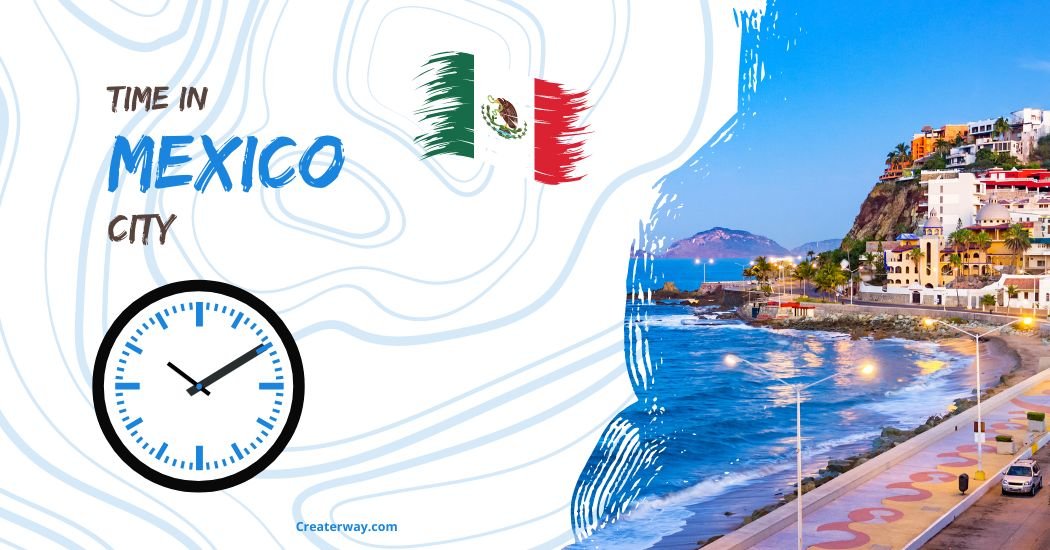GLOBAL NEWS
TIME IN MEXICO CITY

Mexico City, also known as the Ciudad de México, is one of the largest and most vibrant cities in the world. With a population of over 21 million people, it is a bustling metropolis shaped by centuries of history, culture, and tradition. As with any major city, time is an important aspect of life in Mexico City, and understanding how it works can help visitors and residents alike make the most of their time in this dynamic city.
Time Zones in Mexico City
Mexico City is located in the Central Time Zone, which is six hours behind Coordinated Universal Time (UTC-6). This means that if it is noon in New York City, it is 11:00 am in Mexico City. However, it’s important to note that Mexico observes Daylight Saving Time (DST), so during the summer months, the time in Mexico City is the same as the Mountain Time Zone (UTC-7).
History of Time in Mexico City
The history of time in Mexico City is closely linked to the city’s colonial past. When the Spanish arrived in Mexico in the 16th century, they brought with them the Gregorian calendar, which replaced the Julian calendar that had been used in Mexico by the indigenous peoples. The Gregorian calendar was introduced by Pope Gregory XIII in 1582, and it is still used in Mexico today.
Culture of Time in Mexico City
Time is an important aspect of Mexican culture, and it is reflected in many aspects of daily life. Mexicans are known for their relaxed attitude towards time, and punctuality is not always a top priority. However, this does not mean that Mexicans are not time-conscious; they have a different approach to time management than some other cultures.
One example of the importance of time in Mexican culture is the celebration of Dia de los Muertos (Day of the Dead), which takes place on November 1st and 2nd. During this holiday, families and friends gather to remember and celebrate loved ones who have passed away. Time is a central theme of the holiday, as it is believed that the spirits of the dead return to the living world during this time.
Tips for Managing Time in Mexico City
If you’re visiting or living in Mexico City, there are a few tips you can follow to help manage your time effectively:
Be flexible:
As mentioned earlier, Mexicans have a more relaxed approach to time management, so it’s important to be flexible and adaptable.
Allow extra time for transportation:
Mexico City is a large city with a lot of traffic, so it’s important to allow extra time for transportation. This is especially true during rush hour, which can be particularly congested.
Be aware of the weather:
Mexico City has a mild climate, but it canSuffer from occasional heavy rain, particularly in the summer months. Be sure to plan your schedule accordingly, as rain can cause significant delays and disruptions to transportation.
Learn some basic Spanish:
While many people in Mexico City speak English, it’s always helpful to know some basic Spanish phrases. This can help you communicate more effectively with locals and make navigating the city easier.
Use technology to your advantage:
Some apps and websites can help you manage your time in Mexico City, including transportation apps like Uber and Google Maps and weather apps like AccuWeather.
Time-Related Activities in Mexico City
Mexico City offers a variety of time-related activities that visitors can enjoy. Here are a few examples:
National Museum of Anthropology:
This museum is home to the Aztec calendar stone, one of the most famous relics of ancient Mexico. The calendar stone, also known as the Aztec Sun Stone, is a 24-ton sculpture discovered in Mexico City in 1790.
Templo Mayor:
This ancient temple, located in the heart of Mexico City, was dedicated to the Aztec gods. The temple was rediscovered in 1978, and today visitors can explore its ruins and learn about its history.
Zocalo:
The Zocalo is the main square in Mexico City and is one of the largest public squares in the world. It is home to many historic buildings, including the National Palace and the Metropolitan Cathedral.
Palacio de Bellas Artes:
This beautiful building is home to the National Museum of Architecture, as well as a variety of cultural events, including concerts, ballets, and operas.
Xochimilco:
This historic canal system, located in the southern part of Mexico City, is a popular attraction for both locals and visitors. Visitors can take a boat tour through the canals and enjoy live music and traditional food.



















